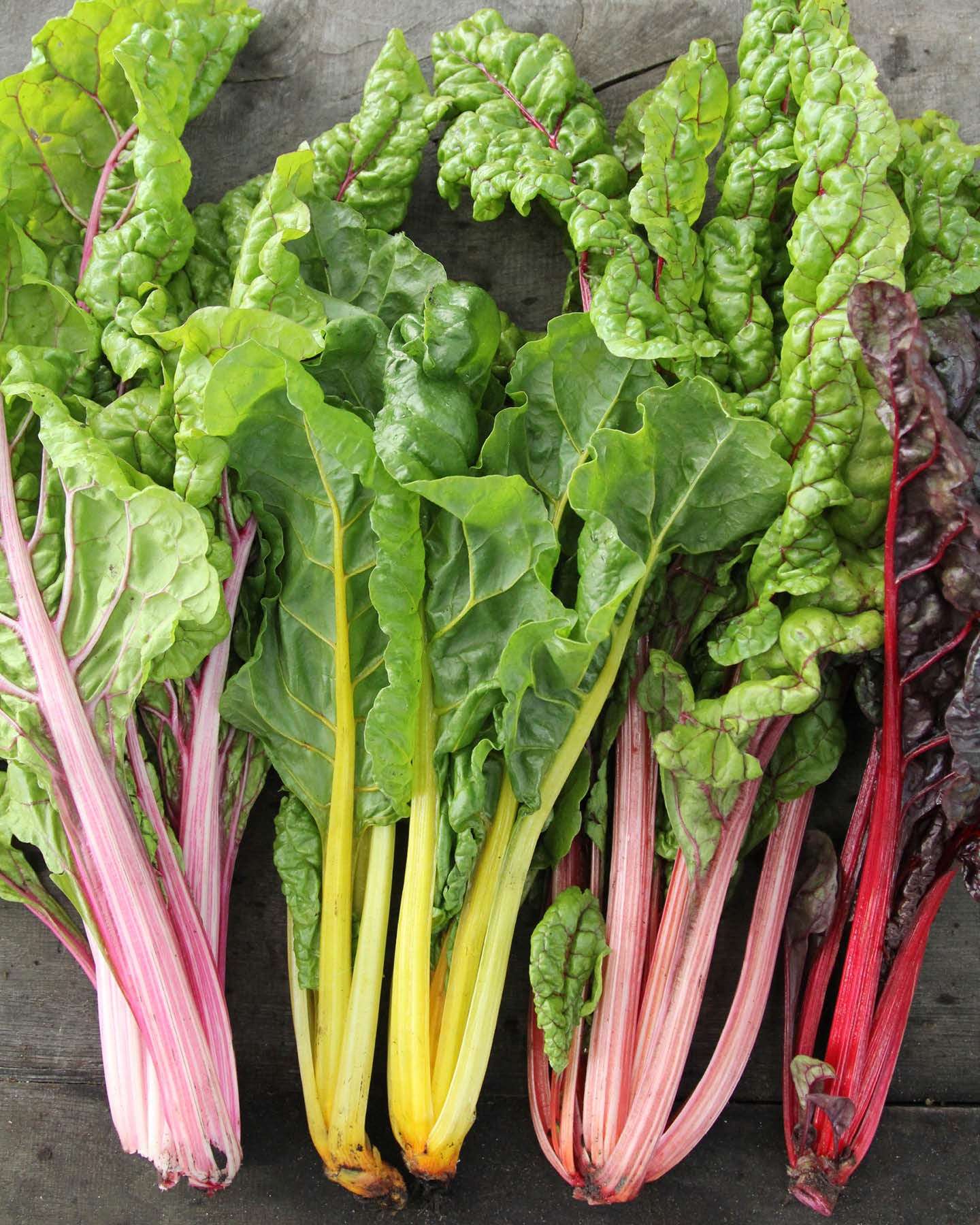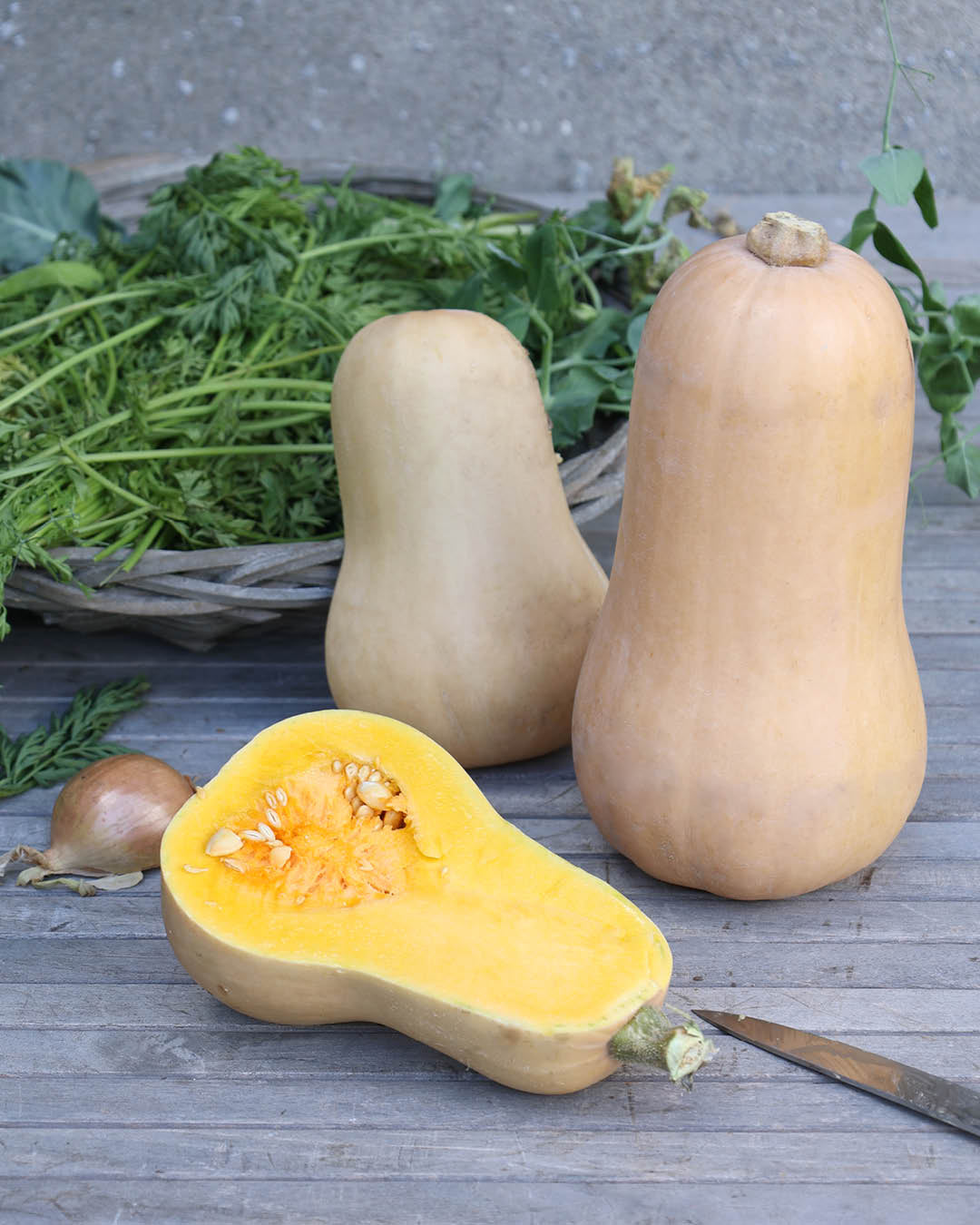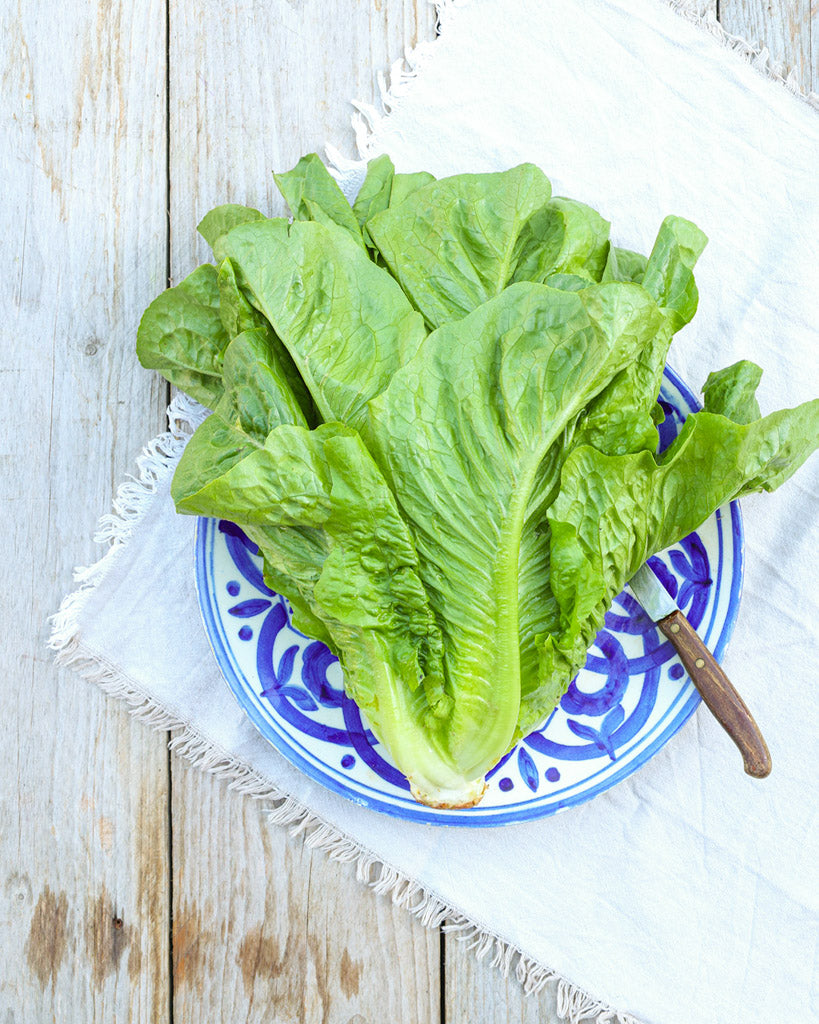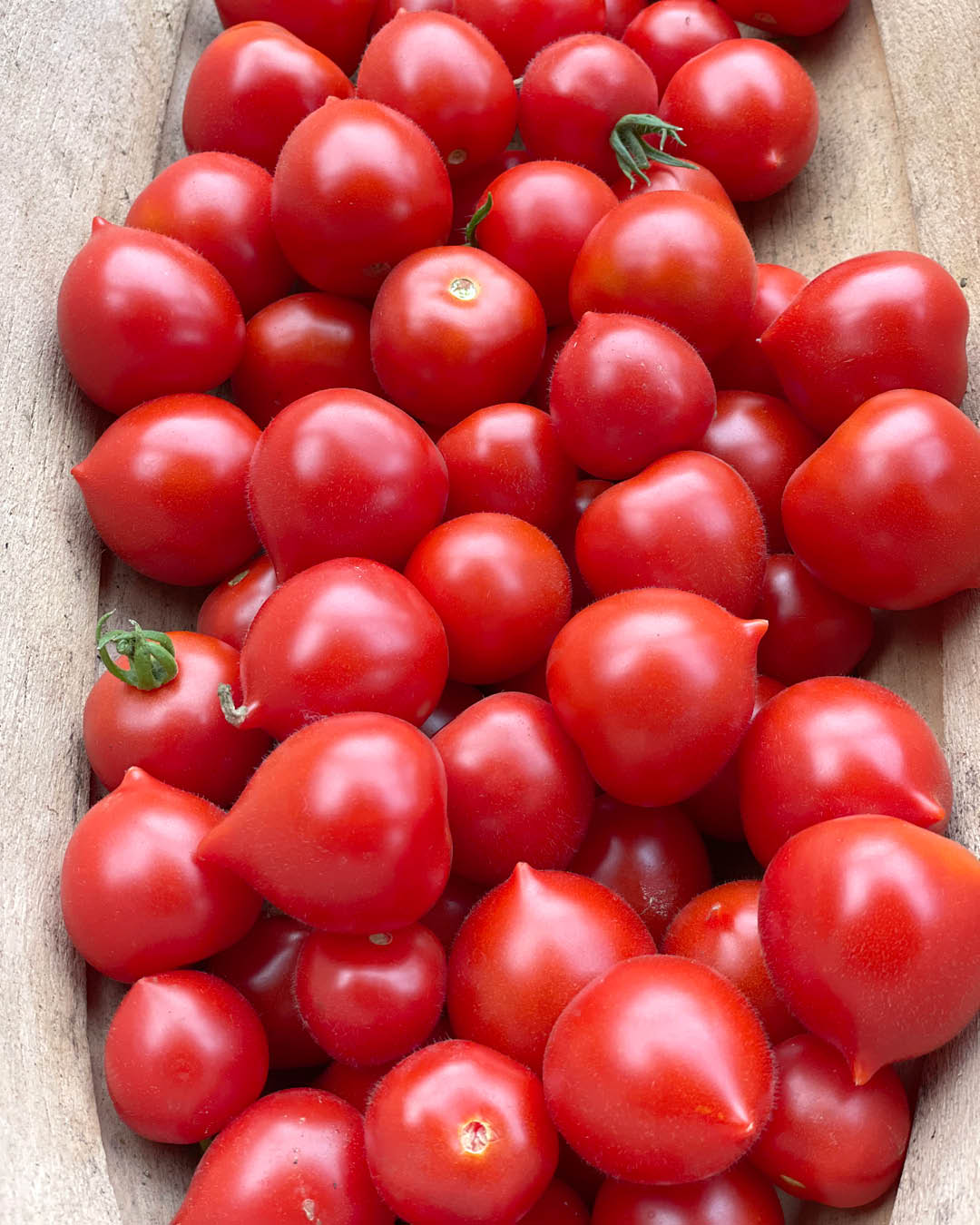The goblin with the yellow eyes
The little owl, the whimsical little owl, was once the favorite bird of the goddess Athena. Today, it needs our help because its breeding grounds have become scarce.
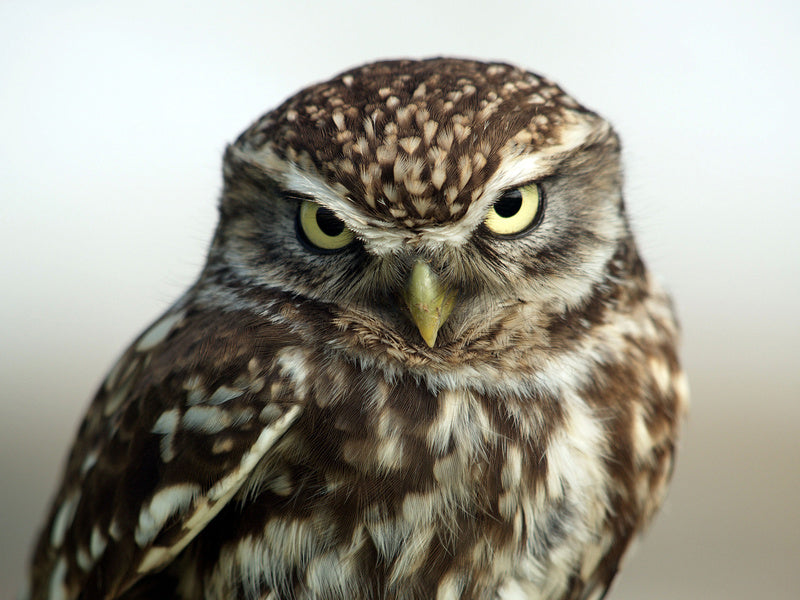
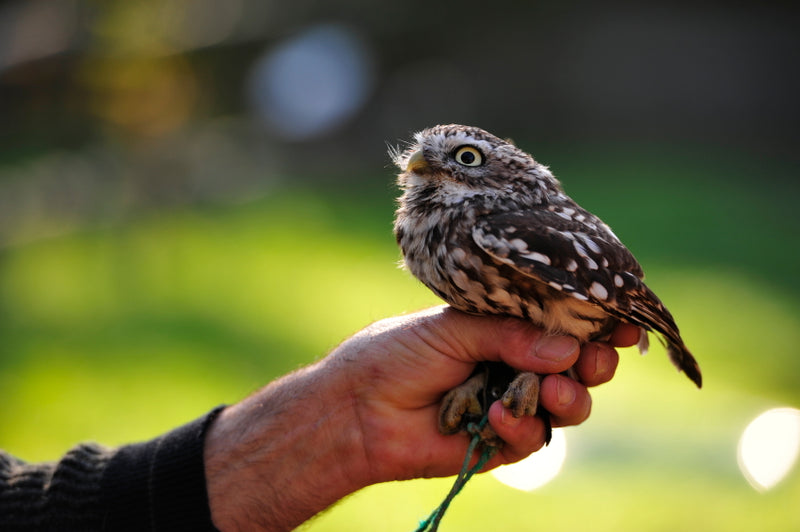
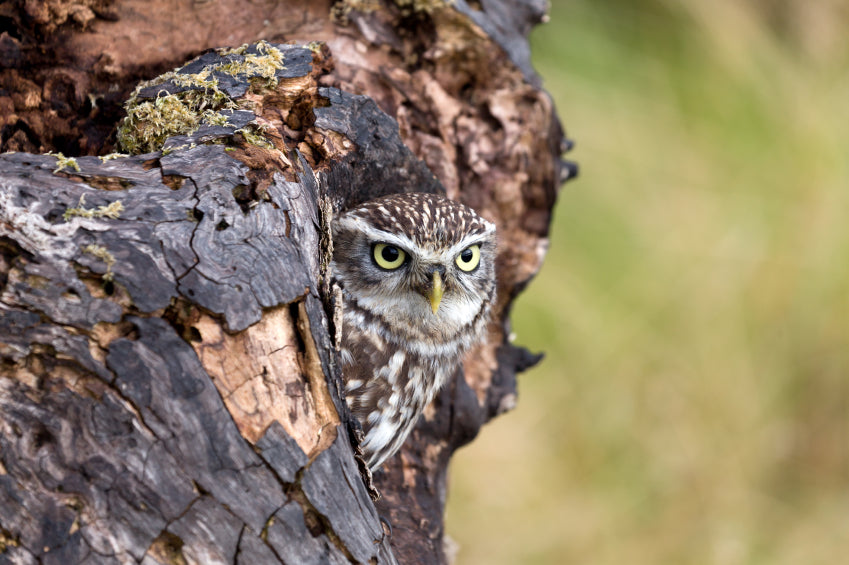
Small and cute
The little owl is a species of owl in the family Strigidae. With a body length of about 20 cm, a weight of only 200 grams, and a wingspan of about half a meter, the little owl (Athene noctua) is considered a small owl. Its size is more in keeping with that of a song thrush, but its loose plumage and broad, round head make it appear larger. This short-tailed owl can be recognized by its broad, round head, striking sulfur-yellow eyes, and brown plumage speckled with white. Males and females do not differ in their plumage. Another typical feature is their stocky body shape when at rest. The little owl covers short distances in a straight, rowing flight, while for longer distances it uses a woodpecker-like undulating flight. They usually fly close to the ground. Due to the high body weight in relation to the wing area and the relatively short flight feathers, the flight of the little owl is audible to humans from close up.
Powerful call repertoire
The lively little owl has a wide call repertoire, ranging from barking, snoring, and meowing sounds to sonorous, soft calls. From February/March onwards, they can be heard well on dry, windless nights. Their alarm and warning call is a loud "guhat," "kwiau," or "kwiu," which can escalate into a barking "kja, kju." The male's mating call is a drawn-out "guhk." This call is heard mainly in March and April. When excited, the owls bob up and down and beat their tails sideways. The female calls primarily when handing over food to her young, then she emits "gek-gö-gekgöck-geck-göck" calls. Meanwhile, the young beg with squeaking sounds. In almost all Western cultures, the owl was once considered a bird of misfortune or death. The little owl's nightly "kuwitt" call was interpreted as "Come with me."
Breeding behavior of the little owl
The birds rely on tree hollows for breeding. If these are not available, they will also use empty barns, chapels, or stables as breeding sites. The nest chamber only needs to be large enough to provide enough space for the eggs and, later, the young. It should also be as dark as possible and offer the brood sufficient protection from wind and rain. The breeding season takes place from April to May. The clutch usually consists of three to five almost spherical eggs, laid two days apart. The female incubates alone and is fed by the male. After 24 to 30 days, the young hatch and leave the nest at around 35 days old, unable to fly. One week later, however, they are already well-versed. They are fed by both parents for a further five weeks. They then become independent and migrate from the territory. As with all birds, the mortality rate of young in the first year is very high at 70 percent. On average, female little owls live to four years of age, while males live slightly longer. The maximum age of wild little owls is 15 years. Those in captivity can live even longer.
Quirky lifestyle
The little owl is a very loyal bird, remaining in its territory, usually only 50 to 100 hectares in size, even in very cold winters. Once it has occupied a breeding and hunting ground, it very rarely leaves. A pair of little owls usually remains faithful to each other for life. The little owl prefers open, sparsely vegetated landscapes, such as orchards, cultivated land, or quarries on the plains. It can occasionally be found in large, natural gardens and parks. It avoids wooded areas completely. Because it is active both day and night, it can usually be observed during the day sitting in a perch and warming itself in the sun.
Varied menu
The owl forages at dusk or at night, and during the nesting season it is regularly active during the day due to its increased need for food. As it is an agile and flexible hunter, at least 25 small mammals and 60 bird species are part of the little owl's varied diet. In addition to field mice, it catches small reptiles and amphibians. It often hunts from low perches such as stones, fences or walls. Occasionally it hunts on the ground, and insects and earthworms are also caught on foot. The little owl's running abilities are particularly remarkable: on the ground it can easily catch a fleeing field mouse with long, quick steps and leaps. The little owl regurgitates the indigestible remains of its prey in the form of pellets around 18 hours after eating. These pellets can be used to determine what the little owl has eaten. The little owl primarily perceives its prey visually. But it also reacts to acoustic stimuli such as the squeaking of mice.
Be careful – there are also enemies!
With owls, the saying "big eats small" applies. Therefore, the little owl is always ready to flee. When threatened, it drops from its daytime perch and runs on foot to cover or disappears quickly into hollows. Larger owl species such as the eagle owl, the tawny owl, and the long-eared owl, as well as a number of birds of prey such as hawks, peregrine falcons, and buzzards, are predators of the little owl. The stone marten also poses a major threat to the little owl. As a skilled climber, it reaches little owl burrows and eats eggs and nestlings. It occasionally even preys on adult little owls. Unfortunately, many little owls are killed in road traffic when, as so-called low-flying owls, they prefer to hunt close to the ground.
Existence and threat
Estimates of the worldwide population vary widely, but are estimated at at least 560,000 pairs. In Germany, the little owl is critically endangered and is on the Red List of Threatened Species. The total population is estimated at around 6,000 pairs, about 76 percent of which live in North Rhine-Westphalia. Due to the constant loss of suitable habitat, the little owl population has steadily declined in recent years. Old walls that serve as shelters are being modernized or renovated, orchards and old trees are being cleared, and extensively used hay meadows and pastures are also becoming rarer.
The Little Thinker
The little owl was the favorite bird of Athena, the goddess of wisdom. It also owes its scientific name (Athene noctua), which means "Night Athena," to her. This made it a symbol of education and wisdom, and is still used as such by publishers, clubs, and other organizations today. Owls are often depicted with glasses, a book, or a mortarboard. A little owl can often be seen on Athena's shoulder or hand in ancient sculptures and paintings. The Greek poet Aristophanes' phrase "carrying coals to Newcastle" also dates back to this time, and refers to a superfluous activity. Owls could be seen everywhere in Athens in the form of statues and paintings. So, if someone was carrying coals to Newcastle, they were doing something superfluous, as there were already enough owls in the city.
Secret star
As early as 500 years before Christ, the little owl was on the reverse of Greek coins. Later, as a heraldic bird with an olive branch, it adorned the silver drachma coins, which were also called "owls." Even today, it adorns the Greek one-euro coin and is intended to remind the owner to spend it wisely.

